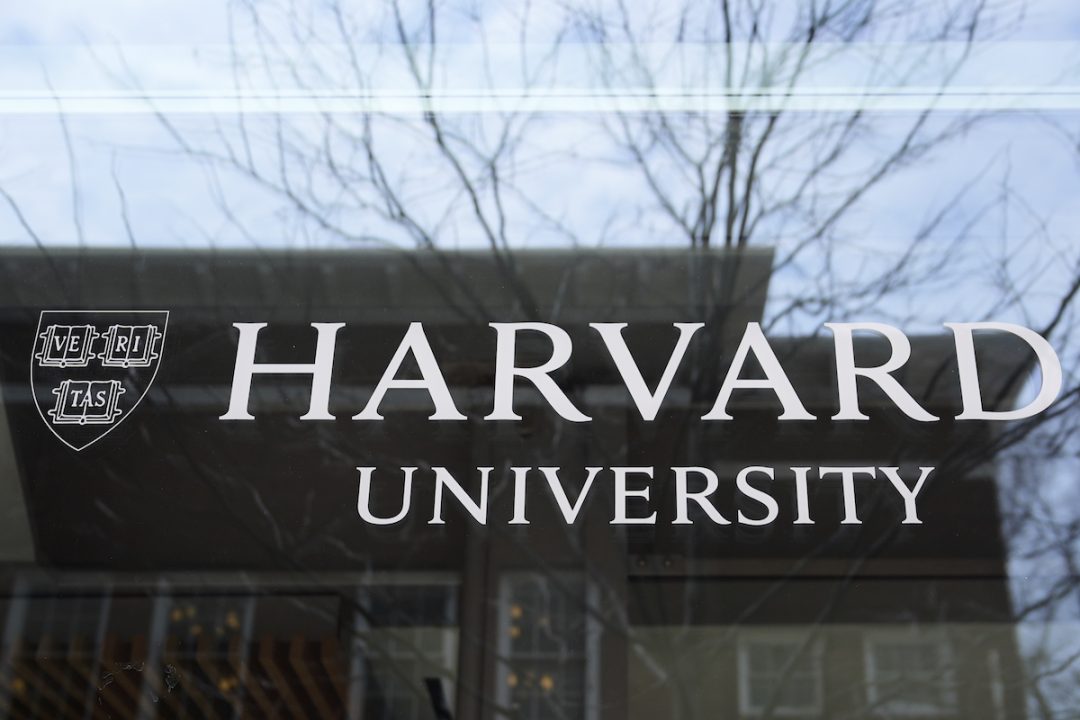
Despite a U.S. Supreme Court ruling about its admission policies and the loss of future federal subsidies, Harvard University has continued its anti-white, racially discriminatory policies.
Documents obtained by the City Journal’s Christopher Rufo demonstrate that Harvard operates a diversity, equity, and inclusion (DEI) “machine” that systematically promotes women and minorities ahead of white men in faculty and administration positions.
That focus on DEI has led to revelations that multiple staff members are plagiarists — not least former President Claudine Gay. But that aside, the documents show that Harvard officials are not concerned about losing not only all future federal grants, but also the school’s coveted tax-exempt status.
Illegal Discrimination
Despite adopting “some conciliatory measures … behind the scenes, the university’s discrimination machine continues to operate at full capacity,” Rufo wrote:
Internal documents … reveal Harvard’s racial favoritism in faculty and administrative hiring. The university’s DEI programs are more than “unconscious bias” training. They are vectors for systematic discrimination against disfavored groups: namely, white men. As one Harvard researcher told us, “endless evidence” suggests that the university continues to discriminate against the supposed oppressor class in hiring and promotions.
For years, Harvard’s DEI department has explicitly sought to engineer a more racially “diverse” faculty pool. The university-wide Inclusive Hiring Initiative provided “guidelines and training” for those involved in the hiring process and was explicitly tied to Harvard’s DEI goals. The stated mission of the initiative is to “[i]nstill an understanding of how departments can leverage the selection process” to build “an increasingly diverse workforce.”
Indeed, a hiring guide titled “Best Practices for Conducting Faculty Searches” is candid in advocating illegal discrimination. Search committees must “ensure that the early lists include women and minorities” and “consider reading the applications of women and minorities first,” the guide says.
As Rufo wrote on X, official policy is to “move white men to the back of the reading pile.”
“The university counsels that committee chairs should ‘continually monitor’ the racial composition of the candidate list and, as they narrow it down, ‘attend to all women and minorities on the long list,’” Rufo continued:
Harvard deliberately factors race into the hiring process. The university gives committee chairs privileged access to “self-identified demographic data, including gender, race, and ethnicity” and encourages chairs to “use this information to encourage diversity in the applicant pool, long list, and short list.” Harvard admits that some of its hiring programs have explicit “placement goals” for women and minorities — which, despite the university’s denial, function as a soft quota.
In the past, the university has made extensive use of DEI statements — a “required qualification for all position descriptions and job postings” — and university-supplied “diversity-related sample interview questions,” which effectively filtered out candidates who did not adhere to the principles of left-wing racialism. Though Harvard’s Faculty of Arts and Sciences officially discontinued its use of mandatory DEI statements last year, the university continues to promote non-mandatory diversity statements for faculty positions and includes language about “diversity, equity, and inclusion” as guiding principles.
“Diversity-Related Sample Interview Questions”
The dopey interview questions are completely unrelated to an individual’s academic qualifications or achievements:
- Please share an example that demonstrates your respect for people and their differences; and how you’ve worked to understand perspectives of others?
- Provide an example of a time you communicated a complex concept to an individual who spoke English as a second language.
- What does diversity, inclusion and belonging mean to you? How do you incorporate this principle in your work?
- What is your definition of a diverse population? … What tools have you employed in working with a diverse staff?
- Explain how diversity has played a role in your career.
- The University has a diverse workforce (in terms of ethnicity, class, culture, language, sexual orientation, and disabilities). Can you tell us about your experience working with and serving such a diverse population?
Law professor Gail Heriot, a member of the U.S. Commission on Civil Rights, told Rufo that such questions are meant to exclude whites. “At other universities, faculty candidates who respond to such inquiries by saying that they treat all individuals equally regardless of race, ethnicity, or sex get excluded from consideration,” she told Rufo. “The same is probably in store for any job candidates at Harvard who dissent from the campus orthodoxy on this issue.”
The university has “explicit racial hiring goals for administrative and support positions under the guise of affirmative action,” Rufo revealed. Such is the madness that “the university declared a goal of increasing the share of minorities in one department’s alumni affairs office nearly six-fold, and of raising the share of female assistants in the School of Public Health to more than 90 percent.”
Heriot didn’t think much of those goals. Setting such goals, she said, means the university expects them “to be acted upon.”
Harvard has a few job categories that are already female dominated, sometimes with over seventy percent of its employees in those categories being female. Rather than being concerned with why more men aren’t applying, Harvard sets a goal to make these job categories even more female dominated.
Consequences
Again, Harvard is apparently not concerned about the legal and financial consequences of its thinly disguised anti-white bias.
Last week, the Trump administration announced that Harvard is no longer eligible for federal subsidies.
Education Secretary Linda McMahon told university President Alan Garber that the campus will not receive federal money going forward. In April, the administration pulled more than $2 billion in federal subsidies to the school, which then sued because the administration had, it argued, broken the law.
And despite the U.S. Supreme Court’s decision in Students for Fair Admissions v. President and Fellows of Harvard College, which forbids anti-white discrimination in admission, Harvard “continues to engage in ugly racism in its undergraduate and graduate schools, and even within the Harvard Law Review itself,” McMahon told Garber. Harvard concomitantly claimed it would follow the Court’s decision yet continue its policy of discriminating on the basis of race.
The administration has also threatened Harvard’s tax-exempt status.
Among the baleful results of Harvard’s stubborn insistence on DEI hiring are a number of plagiarism cases that surfaced thanks to Rufo and other writers.
Among the academic fraudsters is former President Claudine Gay, who was forced to resign her post. Somehow, though, she remains employed as the “Wilbur A. Cowett Professor of Government and of African and African-American Studies.”
That means DEI has even poisoned the once-respected university’s honor code.




